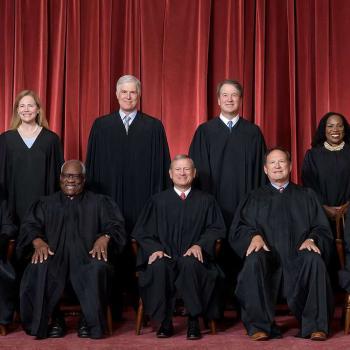The Affordable Care Act (ObamaCare) has been knocked for its alleged unintended consequences. The bill’s attracted speculation that workers will lose their health plans, college grads will stop looking for jobs, and even that fewer people will get married.
Those are just the effects related to insurance regulations. Less attention has been given to how hospitals and health systems might change after ObamaCare.
The most common theory is that reform causes consolidation. But what if the effect on hospitals is even more radical? What if the legislation changes the largely nonprofit nature of the industry?
Right now approximately 60% of the 6,000 or so hospitals in the U.S. are nonprofit, while 25% are government-owned. The rest–fewer than 1,000–are for-profit. There’s a reason the pie cuts this way.
Religious groups, especially Catholic orders, opened many of these facilities as charitable institutions. (Ever driven by a hospital with Mercy in its name?)
Then during the post-war infrastructure boom the federal government offered subsidies to cities that wanted hospitals. Getting the money required nonprofit tax status and a promise to provide “community benefit.”
The IRS originally defined community benefit to mean spending 3% of operating revenue to take care of patients who couldn’t pay. Over time, being tax-exempt became a good deal. If you count all the sales, property, and income taxes that nonprofit hospitals avoid paying it would total $20 billion.
The new health reform legislation could shake the foundations of this cozy set-up. Why?
Many hospitals already do not take care of enough uninsured patients. The GAO found that in California in 2005–which exemplified national trends–nonprofit hospitals only spent 3.5% of their expenses on average on uncompensated care for the uninsured. That means many were below the line. Ironically, for-profit hospitals spent 3.2%.
When 30 million more people get insurance from ObamaCare, those numbers will fall. And tax-exempt status could be threatened.
State laws already provide some guidance. In Texas a hospital must spend 4% of its revenue on charity care to stay nonprofit. In Pennsylvania it is 3%. In Illinois the attorney general, Lisa Madigan, is calling for an 8% threshold to stay nonprofit. Imagine how few will meet that cutoff when, at least in theory, everyone has insurance.
Illinois, with its $8 billion budget deficit, has been the most aggressive state to challenge nonprofit hospitals. The state has been suing one hospital for ten years. Its opponent, Provena Covenant, is a Catholic hospital in Urbana that was known for using bill collectors to go after uninsured patients. The year before the legal battle began Provena spent only 0.7 % of its revenue on charity care.
Last year Madigan began the process of voiding the tax-exempt status of other hospitals in Illinois, including Northwestern’s new women’s hospital.
For now these hospitals can argue, in the legislature and in court, about how much charity they truly provide. Many facilities take a bath on Medicaid patients. But they can not count that as charity care under most current rules. There’s also a legitimate question about what constitutes charity care and what constitutes bad debt or an unpaid bill.
Those will soon be dated arguments.
Assuming that the supply of uninsured patients dries up after 2014 when ObamaCare goes into effect hospitals will have two options.
One will be to convert themselves into for-profit enterprises. This is already happening in places like Detroit, Boston, Scranton, and Miami–where for-profit chains are gobbling up old Catholic and nonprofit systems.
The other option would be for hospitals and governments to agree on a community benefit standard that unlike the old one does not depend on taking care of uninsured patients for free. Many people who work at nonprofit systems do so because they like the mission of caring for their community. So this would be a better option.
Redefining that mission might mean taking money that was going to go to build a new patient tower and instead providing free preventive health services, funding biomedical research, or pursuing some other charitable endeavor.
Will nonprofit hospitals be able to adapt before they get swallowed up? It will all become clear fairly soon.












